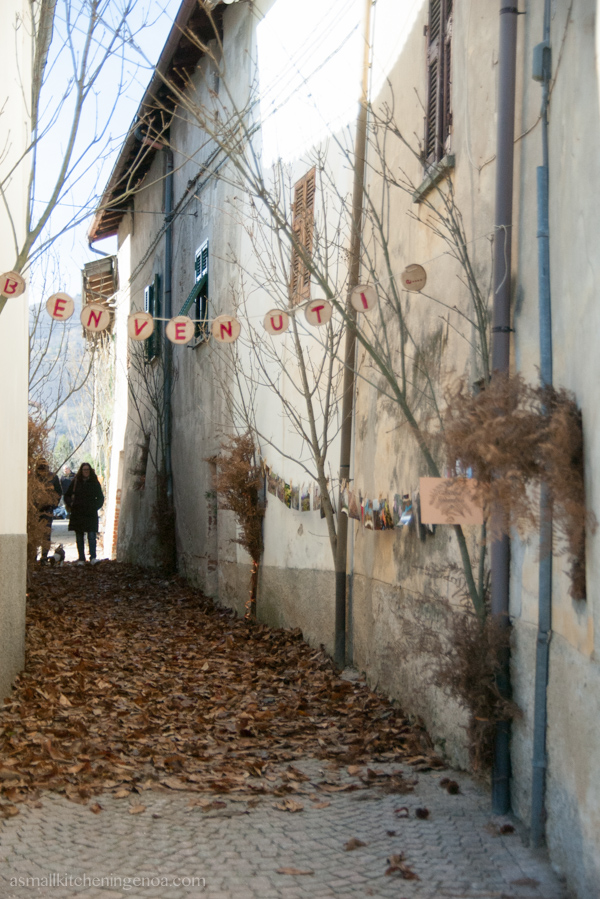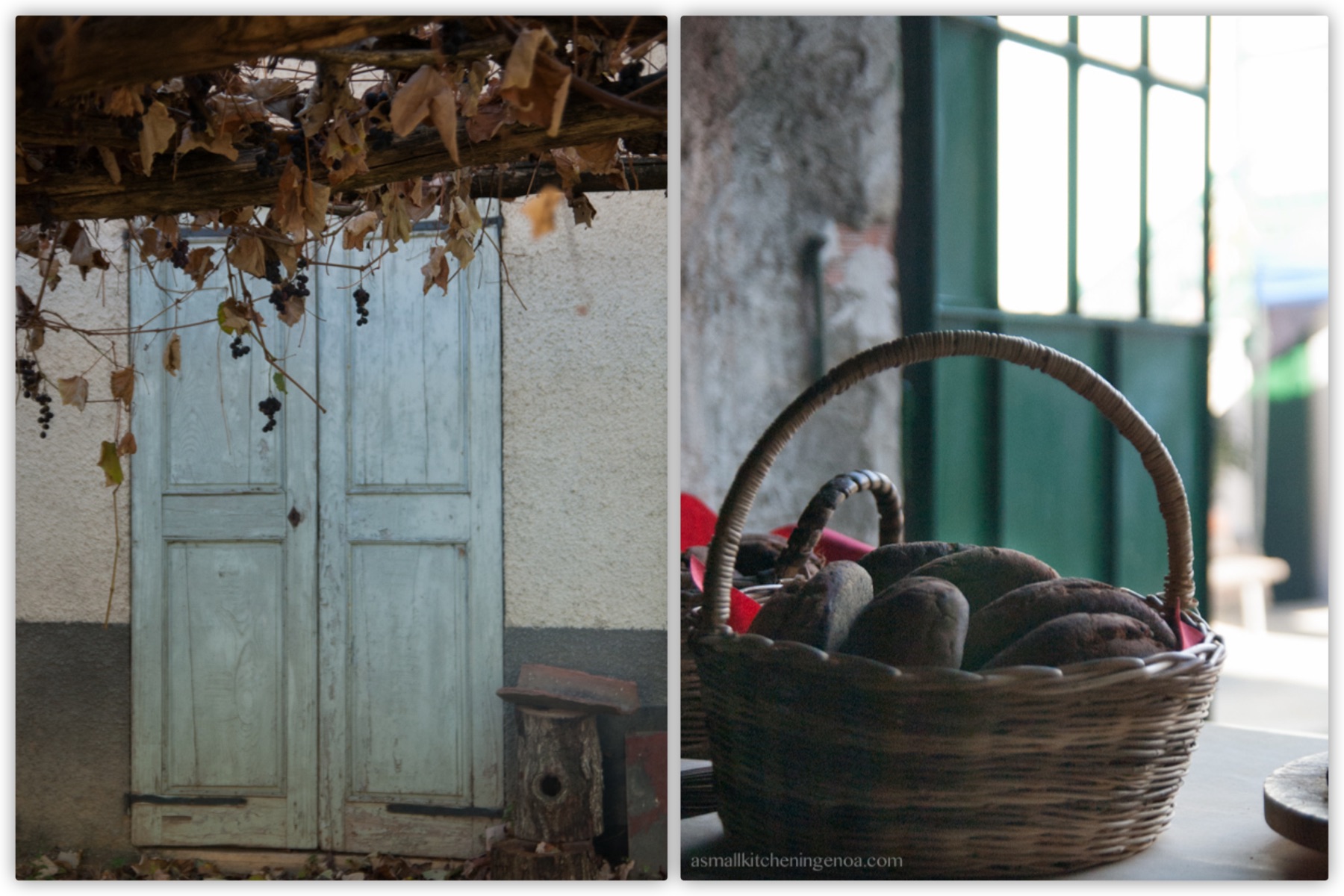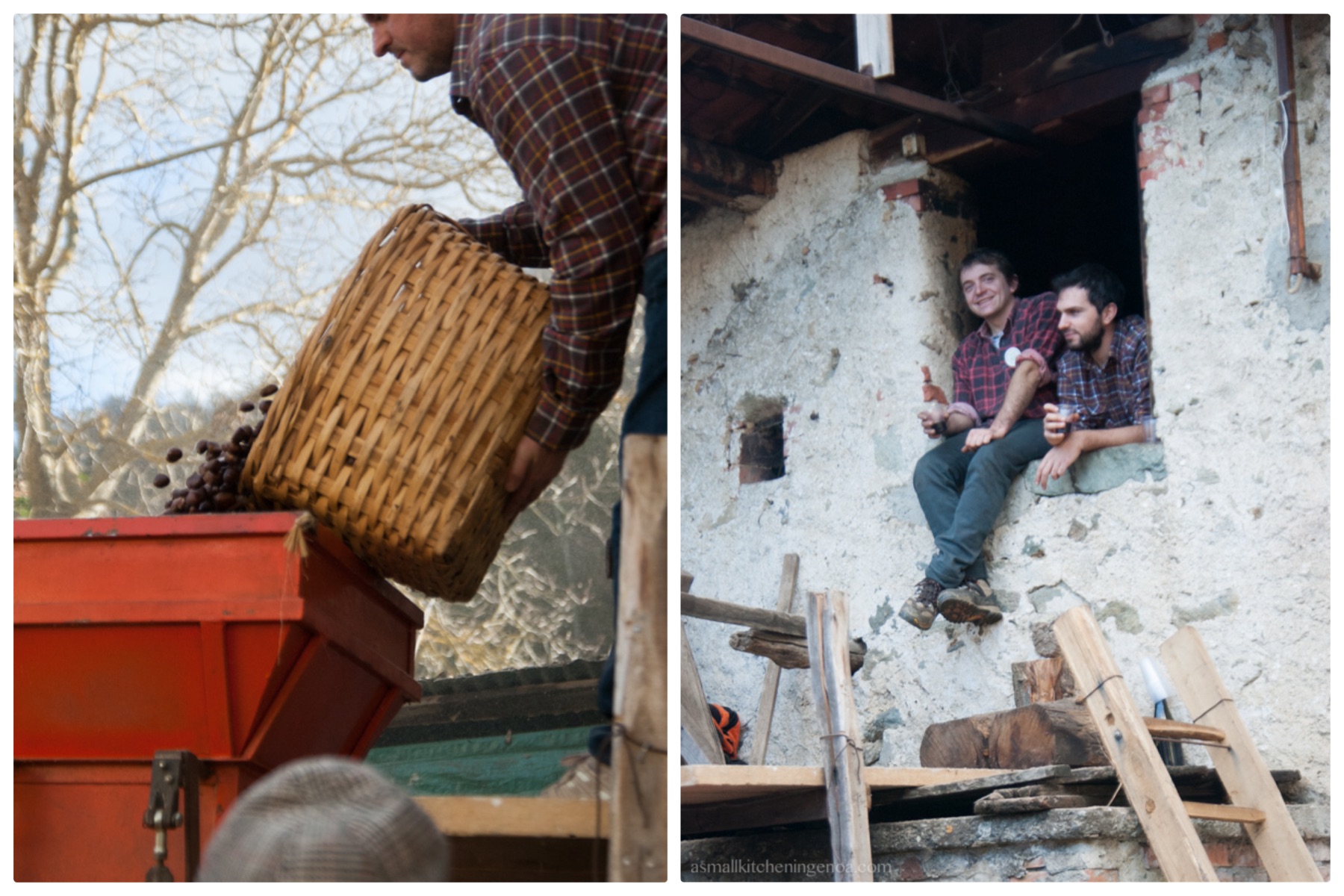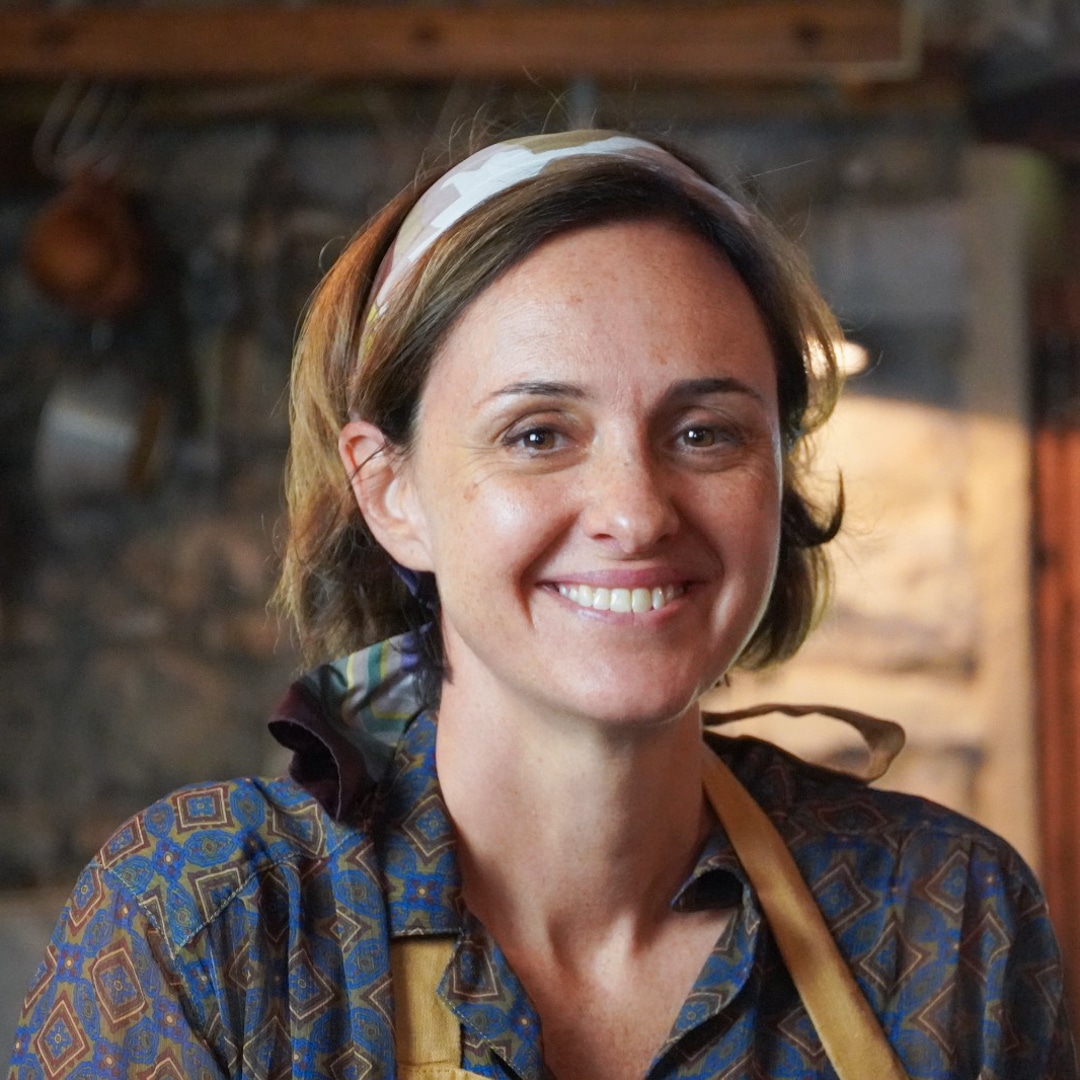In the Bormida Valley, a narrow valley behind Savona on the Ligurian Appennines, and precisely in the tiny villages of Calizzano and Murialdo, a small army of woods custodian keep alive an ancient preservation technique: drying chestnuts in “tecci” (a stone single room building), today awarded as one of the Liguria Slow Food presidia.


To discover the story behind this ancestral product last November I went to the annual “Dried chestnuts fair” at Isoletta, a teeny tiny fraction of Murialdo that hosts one of the last “tecci” still in use.
It was a sunny chilly day. The fistful of houses was dressed up for the party, the home doors opened to serve hot milk & chestnuts or mulled wine to the visitors, the lunch tables set in the private gardens.
When there I heard a conference on peasant culture, asked some questions, smelt the wintery smoky air, and sat for a long time under the warm pale sun on a stone stairwell just looking around.
And this is what I harvested from that heart-warming autumn trip.

The story of the dried chestnuts.
Since ancient times chestnuts were a primary food for the peasant’s population of the Liguria backcountry. The symbiosis between man and chestnut was so strong that this tree was called “the bread tree” or just erbu, “The tree”.
Peasant’s families harvested huge quantities of chestnuts from mid-September to mid-November and let them dry to keep them available year-round. Some were milled to obtain flour to substitute the always lacking wheat flour. Chestnuts were the main food, jointly with the milk of the cow hosted in the dining room.
But chestnut had not only an economical value but also a strong human value. The harvest and then the drying, in fact, was a crucial social moment when people met, made friends, organized weddings, told stories to children and passed on traditions and culture.

Dried chestnuts today
Whilst in the past there were more that 500 tecci in the Bormida Valley woods, today there remain about 10, the ancient tradition of drying chestnuts being abandoned jointly with the depopulation of the countryside. Nonetheless, in the last few years a small group of young farmers strongly engaged themselves to bring to live the traditional preserving techniques, starting cleaning and taking care of the huge chestnuts woods of the Liguria backcountry.
With their hard work these guys, these chestnuts trees guardians, are giving new life not only to an entire territory but also to a hundreds of years old culture.
Their commitment was recognized by Slow Food, who created a presidia to protect the dried chestnuts of Calizzano and Murialdo, and also by the Italian Agricultural Ministry, who included this product in the list of the Italian Traditional Agricultural Products.

How dried chestnuts are produced.
The peculiarity of this product is its method of drying, the so called “teccio”.
This is a small one-room stone building. At the ground floor a low fire – fed with chestnut wood and chestnuts peels only – burns constantly inside, smoking the chestnuts arranged on a wooden rack, the “graia”, suspended two or three meters above the ground.
The drying procedure last at least one month. Then the chestnuts are beaten in order to remove the peel, not before having kept aside the bigger one with the skin perfectly intact, the so called Viette. They are a delicacy to taste boiled just at Christmas and New Year.
Once naked, chestnuts are selected and sorted: those intact are sold as they are, those broken are used to make flour and the bad given to the animals.


Cooking dried chestnuts.
Dried chestnuts have an infinite variety of uses in the kitchen. They must be boiled in advanced as they need to recover their hydration.
The gentle old ladies of Bormida Valley suggested me to boil them at low fire at list for 2 hours with a pinch of salt. Once ready and soft they can be eaten just so, maybe with some hot milk, used to make jams or cooked to accompany roasted meats. Blended they are a prefect base for creams, ice-creams, or any kind of dessert which requires chestnuts puree.
Bormida Valley dried chestnuts, in particular, have a wonderful slight smoky flavour and when you boil them all the home smell as if a fire were going in the living room!
I used them to prepare this wonderful gluten-free and low fat chestnuts cake!

As to chestnuts flour, it is a (partial) substitute of wheat flour. Always the gentle ladies of Isoletta suggested me to use it in the following proportion:
- To make fresh pasta: 60% wheat flour 40% chestnuts flour
- To make gnocchi: 70% wheat flour 30% chestnuts flour.
Well, that’s all folks! Hope you enjoyed this small journey in the culinary heritage of the Italian Riviera.

LINK LOVE:
- If you want to buy some original slow food dried chestnuts of Calizzano and Murialdo or their flour you can get in touch with the cooperative “il Teccio” which groups all the local producers or with some of the local shops marketing the product.
- If you wish to taste an award winning ice-cream made with dried chestnuts you have to go to Calizzato at Gelateria Pinotto. It is considered one of the most delicious Italian gelaterie!
- The sweet and slightly smoky taste of these chestnuts conquered also the beer makers. The artisanal brewery Scarampola, at Millesimo, in fact, produces a red beer flavoured just with this local slow food dried chestnuts. The visit to Scarampola brewery is also worthy for its wonderful location: the ancient abbey of Santo Stefano (year 1200), a jewel of medieval architecture.
- Finally, it’s worth mentioning also the “Marocca of Casola”, an ancient delicious bread typical of Lunigiana (in Tuscany, just on the border with Liguria). It is made with chestnuts flour, smashed potatoes and wheat flour and it is baked in a wood-burning oven. This bread is very similar to that once baked by the Ligurian peasants. It is a Tuscany slow food presidia too.




SHARING IS CARING!
If you like this post, please share it with your friends with the “share” button here below! Thank you!




